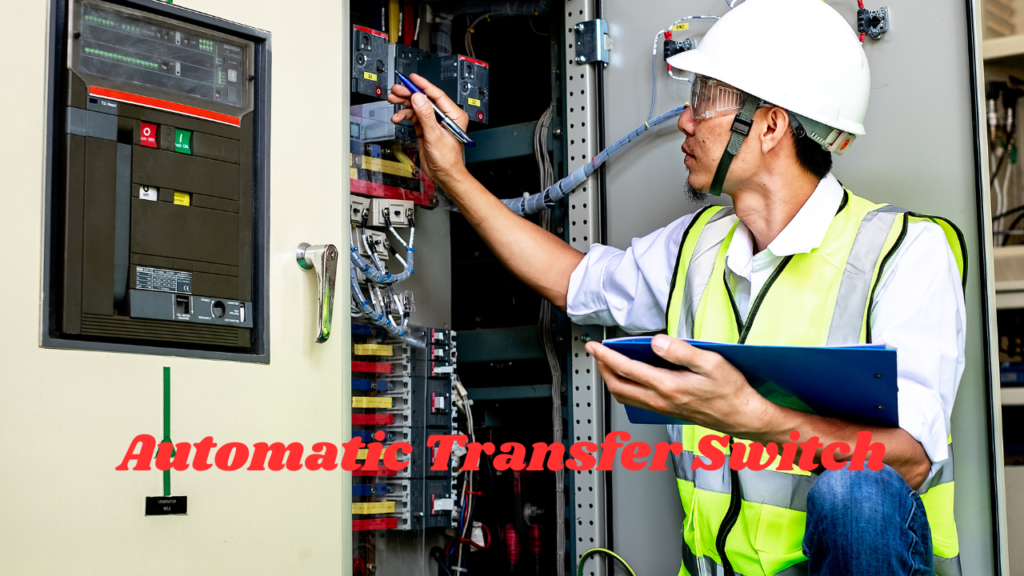Power supply is crucial in our modern world. Everything we do depends on electricity. Any break in power supply can lead to problems, financial losses, or safety risks. ATS help ensure a nonstop power supply, especially in important places like hospitals, data centers, and factories. This article explains how Automatic Transfer Switch work, their benefits, and where they are used.
What are Automatic Transfer Switch?
Automatic Transfer Switch (ATS) are devices that automatically switch power supply from one source to another if the main source fails. They connects the primary power source, like the grid or generator, to the electrical load. ATS units check the voltage and frequency of the primary power source. If there is a power outage or the voltage/frequency changes too much, the ATS quickly switches the load to a backup power source, keeping the power supply continuous.
How Do Automatic Transfer Switch Work?
ATS units have sensors, control logic, electromechanical switches (relays or contactors), and an automatic or manual transfer mechanism. The sensors monitor the primary power source. The control logic processes this information. If needed, it starts the transfer process. Electromechanical switches disconnect the load from the primary source and connect it to the backup source. The transfer can be automatic, happening without human input, or manual, requiring an operator.

Benefits of Automatic Transfer Switch
Dependable Power Supply
(ATS) systems provide a trustworthy power solution. They switch power sources automatically during outages or voltage issues, preventing equipment downtime and keeping critical systems running. ATS units are vital in places where power interruptions can cause major problems, like hospitals, telecom networks, and banks.
Smooth Power Shifts
ATS devices seamlessly transition between power sources in milliseconds. This quick change prevents disruptions to connected equipment. It maintains data safety, process flow, and efficient operations. In situations where even short breaks risk significant losses or safety hazards, like factories or emergency services, smooth transitions are extremely important.
Smart Power Management
ATS allow the use of multiple power sources enables efficient load management. When utility power and backup generators are available, ATS systems can prioritize sources based on cost, availability, or environmental factors. This flexibility boosts reliability and optimizes energy use, reducing long-term operational costs.
Remote Monitoring and Control
Many current ATS units have advanced features. These allow people to check the ATS system’s status. They can get alerts and notifications right away. They can also control transfer sequences or do diagnostics from far away. Remote monitoring and control let people maintain, troubleshoot, and improve power systems before problems happen makes the systems more reliable and efficient to operate.
Installing and Maintaining Automatic Transfer Switch
Proper System Design
Designing the right ATS system is crucial. Carefully consider the anticipated power load, the backup source capacity, and any redundancy needs. Proper sizing ensures the transfer switch meets the application’s demands.
Regular Checks and Tests
ATS require routine maintenance and testing. Follow the manufacturer’s guidelines for inspections, electrical tests, and functionality checks. Periodically test the load transfer and switching sequences catches potential issues, ensuring reliable operation during power emergencies.
Drawbacks of Automatic Transfer Switch (ATS)
- High Initial Cost: Buying and setting up an ATS can be quite expensive is especially true for large systems or ones with extra features like remote control. The upfront price may be too much for some users.
- Complex Systems: ATS units involve complex electrical parts and systems. You need skilled experts to install, maintain, and fix any issues with them. Problems with the installation or upkeep can cause the ATS to malfunction or fail.
- Single Failure Point: Though ATS systems switch between main and backup power to improve reliability, they themselves are a single point that could fail. If the ATS itself fails, all connected equipment loses power. Regular upkeep and backup plans are crucial.
- Compatibility Challenges: Integrating an ATS with existing power and generators may be difficult. Making everything work together seamlessly could require extra work and spending, complicating the setup process.
- Ongoing Maintenance: ATS systems need regular checkups, tests, and servicing to work properly. This takes time and resources. Neglecting upkeep raises the chances of power disruptions.
Conclusion
ATS units quickly switch power sources when an outage or issue ensures critical systems keep running smoothly. Many industries rely on ATS to prevent disruption. ATS units switch between sources without interruption. They also allow remote monitoring for optimum energy usage. Downtime is minimized, and operations run efficiently. As technology advances, ATS units will become even smarter and gain new features. However, to truly benefit from ATS, they must be designed properly, maintained regularly, and follow industry rules. Reliability, resilience, and efficiency are priorities for ATS. They safeguard essential services and boost productivity by avoiding power disruptions. ATS units are crucial parts of power systems, enabling continuity in our demanding world.
FAQ’s
How does an Automatic Transfer Switch?
The ATS constantly monitors the main power source. When it detects any abnormalities, such as a power cut or voltage/frequency going beyond acceptable levels, it automatically transfers the electrical load to an alternative power source. This switchover happens smoothly without any break in power supply.
What are the benefits of using Automatic Transfer Switch?
It prevent downtime during power failures. They enable seamless transitions between power sources and help manage electrical loads efficiently. Many ATS units allow remote monitoring and control for easy maintenance and troubleshooting.
Where are Automatic Transfer Switches commonly used?
ATS units are widely used in places where uninterrupted power is crucial includes commercial and industrial buildings, hospitals, telecommunication networks, data centers, and emergency response systems. They ensure operations continue without disruption.
What considerations should be taken into account for ATS installation and maintenance?
Proper system design and sizing are important for effective ATS installation. Regular maintenance is essential too. Routine inspections, testing, and load simulations help ensure the ATS is working correctly. Following industry standards during installation and maintenance is crucial.

